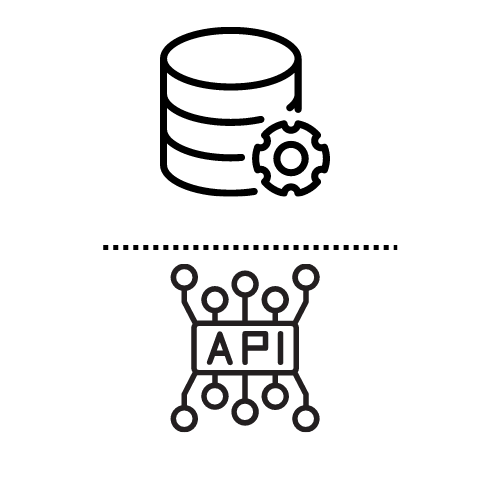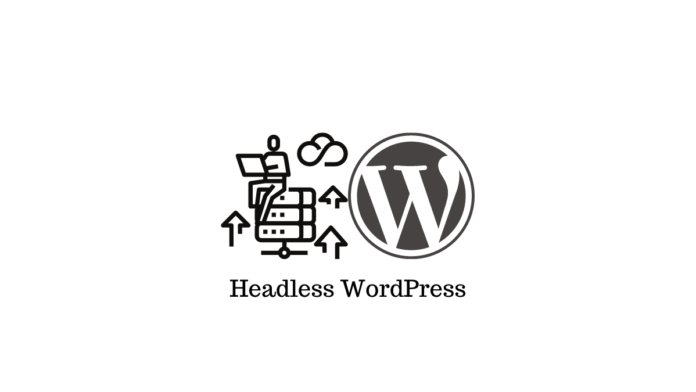Headless WordPress is a content management system that works with the front end of WordPress removed from the back end. Before delving into this article about it, let us first discuss headless content management systems broadly to get an idea of what they are before going into the WordPress variation of it.
Headless CMS
Usually, content management systems have a back end where you create and manage your content and a front end which is a website where the content is available for website visitors to interact with.
In traditional content management systems, the front end and back end are “coupled”. This means they access the database and other assets and work together to deliver the end product, which is the website or any interface meant for end-users depending on the use case.


In a headless CMS, the front end is removed from the system and website owners use only the back end for content management. Since the front end (the head) is decoupled from the back end (the body) this type of CMS is referred to as headless or decoupled content management systems.
In a headless CMS, the back end containing the database is used to manage content. The front end is where the presentation part of the system is handed over to an API that handles how the content is served to end-users.
Headless WordPress
Now in WordPress, you know the back end, which is the dashboard where you create and publish content and add plugins and themes to increase the functionality of your website. The content and changes you make are reflected in the website which is the front end. This is the coupled WordPress CMS.
In a decoupled WordPress, the back end content management system is available for the user, but the front end is taken out of the system. So you cannot access the WordPress block editor and themes. Instead, the front end of the headless WordPress is handled by APIs like the REST API which handles the appearance and other front-end aspects of the website.
Why use Headless WordPress?
So, why go into all the trouble to change from the convenient and easy Vanilla WordPress to a headless installation? Headless WordPress has loads of perks, even if they are not for everyone.
Let’s take a look at some of the benefits now.
Multi-Channel Content Distribution
Since Headless WordPress doesn’t have a front end, you can hook it up with an API and set it up without the limitations of WordPress. What you have is a content bucket where you store all your content and it is distributed across websites, apps, and even social media channels. This simplifies putting out content across multiple platforms.
Improved Content Loading Speed
WordPress is a loaded tool capable of building complex websites with endless possibilities. But this also makes it a slow tool to websites. In the headless setup, you can configure the API to load only the necessary files which increase the page loading speed considerably.
Combining that with the ability to write the front end in any language in headless WordPress, the website is way lighter and faster than traditional WordPress. And no matter what the website is used for, a faster loading one will always perform better in getting leads and visitor experience.
Work With Any Language
Regular WordPress mainly uses three languages, PHP, JavaScript, HTML, and CSS and in traditional WordPress, you are limited to working with them. PHP is not really a fast-running language for example. By adapting the headless structure, you get the freedom of more choices. You can use the latest languages and frameworks to build your front end by setting up the API accordingly.
More Secure


Since a headless CMS connects to the front end using APIs, a website visitor’s access to the database is removed from the equation. This means the front end and back end are contained in different servers. So your data containing sensitive information is protected by this added security. This makes your database less vulnerable to hacking and cyber-attacks.
Scalability
One of the biggest advantages of headless WordPress is the ability to share content to any number of endpoints without having to adapt it to them individually. You can set up your API to repurpose content based on the endpoint and this makes it easy to increase reach and your ability to put more content out easily. This makes headless WordPress an ideal choice for websites looking to scale up or large-scale enterprises to efficiently manage content.
The Catch
It is not all sunshine and rainbows in the Headless CMSville, at least not for everyone using WordPress. The main drawback of headless WordPress is that it splits your CMS into two, and you have to now maintain them both instead of a single system as in a traditional WordPress.
What this implies is that you need to code the front part of your CMS which requires technical knowledge. The no-code way of WordPress is really attractive from this end. Creating and maintaining a headless WordPress system means time, effort, and money spent on coding to create and maintain it.
Another disadvantage of going headless is that you will let go of most of the pros of the traditional WordPress, like a live preview and the visual editor. So you cannot have a live preview of the front end changes as you edit in the back end.
Implementing Headless WordPress


You can use plugins like CoCart, Headless CMS, and Headless Mode to customize the WordPress REST API which will do the heavy lifting to make going headless easier. Or you can build the front of your website yourself. Both require knowledge of programming languages and how APIs work so your front end can make requests to the AP or you can hire developers to do that. Besides creating it, maintaining the system also requires technical skills.
Our Verdict
Headless WordPress is a relatively new and promising technology and it has the potential to change the way content is generated by big businesses who want multi-channel content distribution along with the advantage of WordPress at their back. But, it may not completely replace non-headless WordPress.
Small businesses that are just starting with their websites can’t afford to spend the resources a headless CMS requires for it to be financially viable. If that is your case, then you can just go with the traditional WordPress for managing your content.
But for businesses that are putting out content at a high rate and can handle the technical and financial resources can greatly benefit from the headless WordPress with its flexibility, speed, and security.
If you have any questions or comments, please share them in the comments section below.
Further Reading











